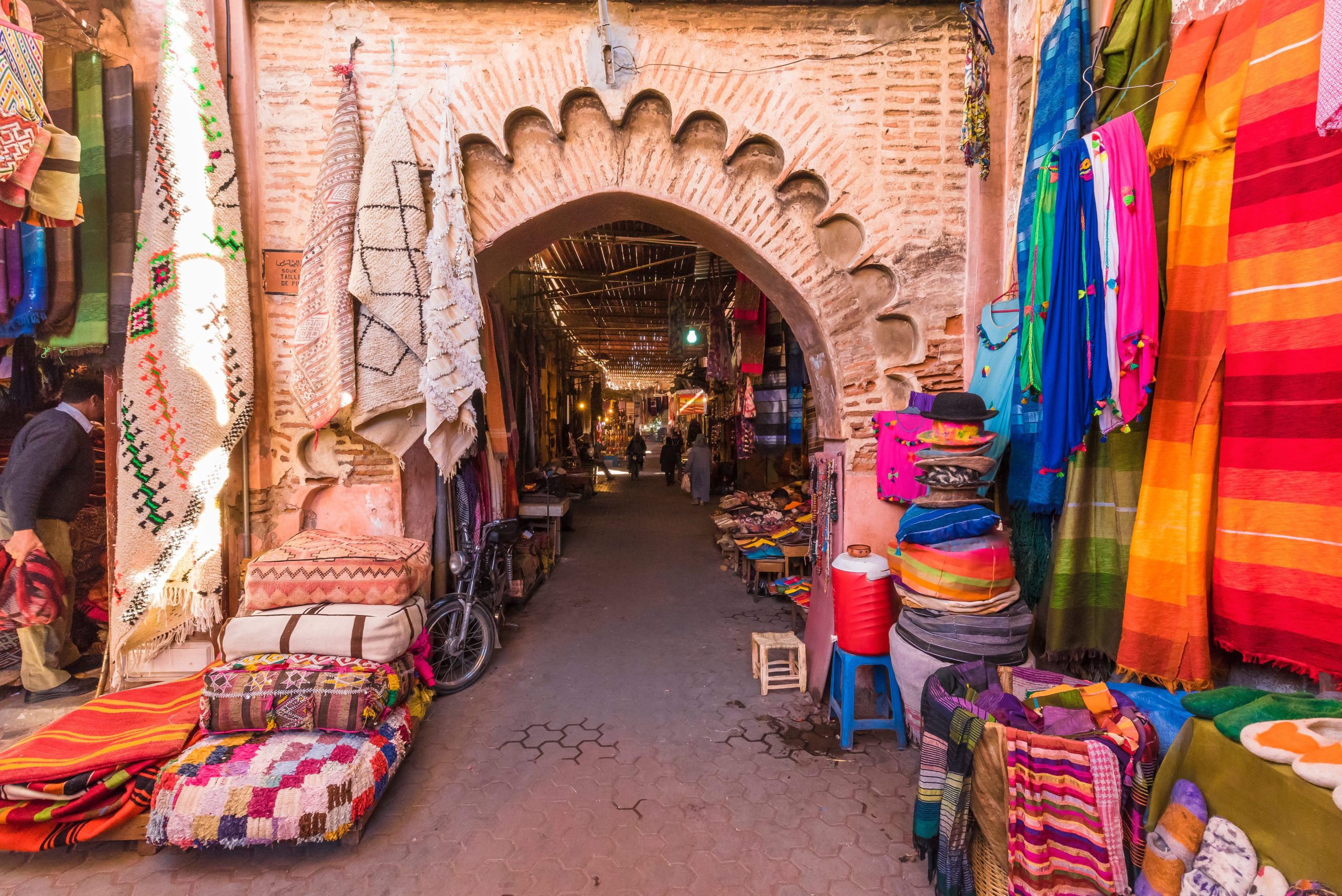Marrakech, known as the “Red City” due to its distinctive red sandstone buildings and vibrant culture, is one of Morocco’s most popular travel destinations. Whether you’re drawn to its rich history, bustling souks, or tranquil gardens, this city promises a trip full of discovery and wonder. A visit to Marrakech can be a journey of contrasts—ancient traditions blend seamlessly with modern flair, creating an experience unlike any other. In this article, we’ll explore all that Marrakech has to offer, from the historical landmarks to the unique cultural experiences, and provide insights for your trip au Maroc, including tips for a road trip maroc.
Marrakech: A City of Magic
Marrakech has long been a magnet for travelers, with its captivating atmosphere, rich history, and thriving arts scene. Located at the foot of the Atlas Mountains and on the edge of the Sahara Desert, it is a city that offers an intriguing mix of ancient and modern, rustic and sophisticated. It is the fourth largest city in Morocco and one of the most visited cities in Africa.
The Charm of the Medina
One of the most iconic features of Marrakech is its Medina, a UNESCO World Heritage site that is home to centuries-old palaces, gardens, and the famous Jemaa el-Fnaa square. The maze-like streets of the Medina are filled with souks (markets) selling everything from spices and textiles to leather goods and pottery. Navigating through the Medina can feel like stepping back in time, with its narrow alleyways, traditional riads (guesthouses), and centuries-old mosques.
The vibrant souks are the heart of the city, where you can immerse yourself in local life, barter for handicrafts, or simply people-watch while sipping mint tea. These souks are where artisans showcase their craftsmanship, and it’s a great place to purchase unique souvenirs.
Jemaa el-Fnaa: The Heartbeat of Marrakech
At the center of the Medina lies Jemaa el-Fnaa, a lively public square that comes alive with activity at all hours of the day. During the day, it hosts snake charmers, street performers, fortune tellers, and vendors selling fruits, nuts, and fresh juices. As the sun sets, Jemaa el-Fnaa transforms into an open-air food market where locals and tourists alike gather to enjoy traditional Moroccan dishes like tagine, couscous, and kebabs. This square is more than just a market—it’s an experience that encapsulates the vibrancy and energy of Marrakech.
Exploring Marrakech’s Historic Landmarks
Marrakech is a city steeped in history and culture, with numerous landmarks that reflect its glorious past. From the stunning architecture to the tranquil gardens, here are some of the must-visit places in Marrakech:
The Koutoubia Mosque
One of the most recognizable symbols of Marrakech is the Koutoubia Mosque. Built in the 12th century, this mosque is not only an architectural masterpiece but also the largest mosque in the city. Its towering minaret rises 77 meters into the sky, making it a visible landmark throughout Marrakech. While non-Muslims cannot enter the mosque itself, visitors can admire the beautiful gardens surrounding it and take in the impressive structure from the outside.
Bahia Palace
A masterpiece of Moroccan architecture, the Bahia Palace is a stunning example of Islamic and Moroccan design. Built in the late 19th century, the palace was intended to be the home of the grand vizier, Si Moussa, and later his son. The palace features intricately decorated rooms, lush gardens, and tranquil courtyards that reflect the opulence of the time. Visitors can explore the many rooms of the palace, including the grand harem and the courtyards adorned with mosaics and fountains.
Saadian Tombs
The Saadian Tombs are one of the most important historical sites in Marrakech. They date back to the 16th century and are the final resting place of members of the Saadian dynasty. The tombs are located in a beautiful garden, surrounded by ornate stucco work and colorful tile mosaics. The site was rediscovered in the 20th century and has since become one of the most visited attractions in the city.
Jardin Majorelle
For a more serene experience, the Jardin Majorelle (Majorelle Garden) is a must-see. This botanical garden was designed by French painter Jacques Majorelle in the 1920s and later restored by Yves Saint Laurent. The garden is a stunning oasis in the heart of the city, featuring vibrant blue buildings, lush greenery, and an impressive collection of exotic plants. It’s an ideal place for a leisurely stroll, offering a peaceful respite from the hustle and bustle of the city.
El Badi Palace
The El Badi Palace, which once stood as one of the most grandiose palaces in the world, is now a fascinating ruin. Built in the late 16th century by the Saadian Sultan Ahmad al-Mansur, the palace was designed to be an extravagant residence, featuring marble courtyards, golden decorations, and a pool. Although much of the palace was plundered over the years, visitors can still admire its imposing walls, beautiful courtyards, and the remnants of its former grandeur.

